Skin care
7 Beauty Ingredients That Are Illegal…Just Not in the USIf you think European beauty products are better, you might be right -- or at least the ingredients in cosmetics might be better for you. Read on to find out why |
Here's the scary truth: There are many ingredients in cosmetics that may be bad for you. The FDA only regulates certain types of products -- like sunscreens and acne treatments -- and the rest of the time it's up to the manufacturer to decide whether a formulation is safe.
According to the Environmental Working Group (EWG), there are more than 1,100 ingredients used in beauty products in the U.S. that are banned in other countries like Japan, Canada, and members of the European Union. In fact, the FDA only prohibits the use of 10 ingredients in cosmetics, and they include scary substances like mercury and chlorofluorocarbon.
Skip ahead to learn more about seven scary ingredients in cosmetics.
But that doesn't mean the other 1,090 ingredients are toxic, as well. "Overall, one big reason why the US may allow certain ingredients for use in beauty products and others countries don't could be because those countries may not have enough information on the ingredients to deem them allowable for use," says cosmetic chemist and founder of BeautyStat.com Ron Robinson. "This does not mean that the ingredient is necessarily dangerous. It just means that the ingredient needs safety documentation clearance before it's allowed for use."
So maybe other countries are being overly cautious, but the FDA is at the opposite end of the spectrum. Studies show that there are ingredients in cosmetics that could be toxic, yet formulators continue to use them just because it's easier -- and there aren't any regulations to stop them.
The following seven ingredients -- which you'll probably find in many of your favorite products -- raise red flags. Some of the ingredients still have many supporters in the dermatology world, while some are almost universally opposed. The good news is there are alternatives to all of them. So if you don't want lead in your lipstick, read on to learn more.
SEE NEXT PAGE: Oxybenzone
According to the Environmental Working Group (EWG), there are more than 1,100 ingredients used in beauty products in the U.S. that are banned in other countries like Japan, Canada, and members of the European Union. In fact, the FDA only prohibits the use of 10 ingredients in cosmetics, and they include scary substances like mercury and chlorofluorocarbon.
Skip ahead to learn more about seven scary ingredients in cosmetics.
But that doesn't mean the other 1,090 ingredients are toxic, as well. "Overall, one big reason why the US may allow certain ingredients for use in beauty products and others countries don't could be because those countries may not have enough information on the ingredients to deem them allowable for use," says cosmetic chemist and founder of BeautyStat.com Ron Robinson. "This does not mean that the ingredient is necessarily dangerous. It just means that the ingredient needs safety documentation clearance before it's allowed for use."
So maybe other countries are being overly cautious, but the FDA is at the opposite end of the spectrum. Studies show that there are ingredients in cosmetics that could be toxic, yet formulators continue to use them just because it's easier -- and there aren't any regulations to stop them.
The following seven ingredients -- which you'll probably find in many of your favorite products -- raise red flags. Some of the ingredients still have many supporters in the dermatology world, while some are almost universally opposed. The good news is there are alternatives to all of them. So if you don't want lead in your lipstick, read on to learn more.
SEE NEXT PAGE: Oxybenzone










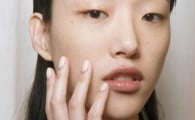



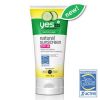

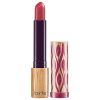

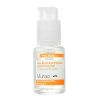

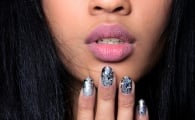
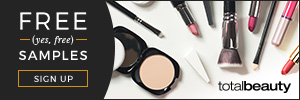










Older comments
Good to know.
by caitlin_bickel Wednesday, May 15, 2013 at 02:52PM Report as inappropriate
I hate that they do this to us in the US.
by tiffany_gallehugh Tuesday, May 14, 2013 at 12:42PM Report as inappropriate
Liked. Too bad didn't name some common examples
by Dee Sunday, May 12, 2013 at 11:45AM Report as inappropriate
That's a lot of chemicals but I don't believe they are harmful in just cosmetics because they r such small amounts
by kfloyd01 Friday, May 10, 2013 at 09:19AM Report as inappropriate
Contrary to popular belief, oxybenzone is actually good for your skin. It's non-phototoxic (doesn’t cause skin reactions in the presence of sunlight). Trace amounts of oxybenzone can be absorbed into the bloodstream via topical application but is readily metabolized and excreted in the urine. Benzephenone is a substance found in plants that have been shown to actually kill cancer cells. Some benzophenones have been shown to have estrogenic properties and anti-dihydrotestosterone after being fed or injected to rats or applied to rat cells in lab dish, whereas benzophenone itself was shown to have no effect at all. There is research showing it is not linked to estrogenic activity. There is one study that showed it stimulated breast cancer cells in vitro (meaning in a lab dish). But that is vastly different from how oxybenzone is used in sunscreens. Oxybenzone was not shown to have hormone-disrupting effects when used as directed in permitted concentrations. Research to the contrary has been disproven by the European Union’s Scientific Committee for Cosmetic Products and Non-Food Products Intended for Consumers, which is why oxybenzone is still permitted as a viable sunscreen throughout the European Union. In fact, the EU’s usage level for oxybenzone is higher than what is permitted in the United States (10% vs. 6% maximum). Later research on this topic has either been in-vitro or has focused on controlled doses of benzophenones given to fish, which isn’t representative of how these chemicals are used by people.
by hiddenexpose Wednesday, May 1, 2013 at 01:42PM Report as inappropriate
I appreciate the fact that the article is balanced regarding the ingredients that are not yet proven safe or unsafe.
by AstridB Tuesday, April 30, 2013 at 01:18AM Report as inappropriate
Thanks for the info.
by Alana_Danes Friday, April 26, 2013 at 07:57AM Report as inappropriate
One of my my creams have hydroquinone in it, good to know.
by nicky22 Thursday, April 25, 2013 at 07:11PM Report as inappropriate
It was a great article showing some alternatives...although I think some are not as bad as others.
by CinnaBlaze Thursday, April 25, 2013 at 06:56PM Report as inappropriate
It's a shame that these ingredients are still being sold if they're harmful.
by Monique3 Thursday, April 25, 2013 at 06:27PM Report as inappropriate